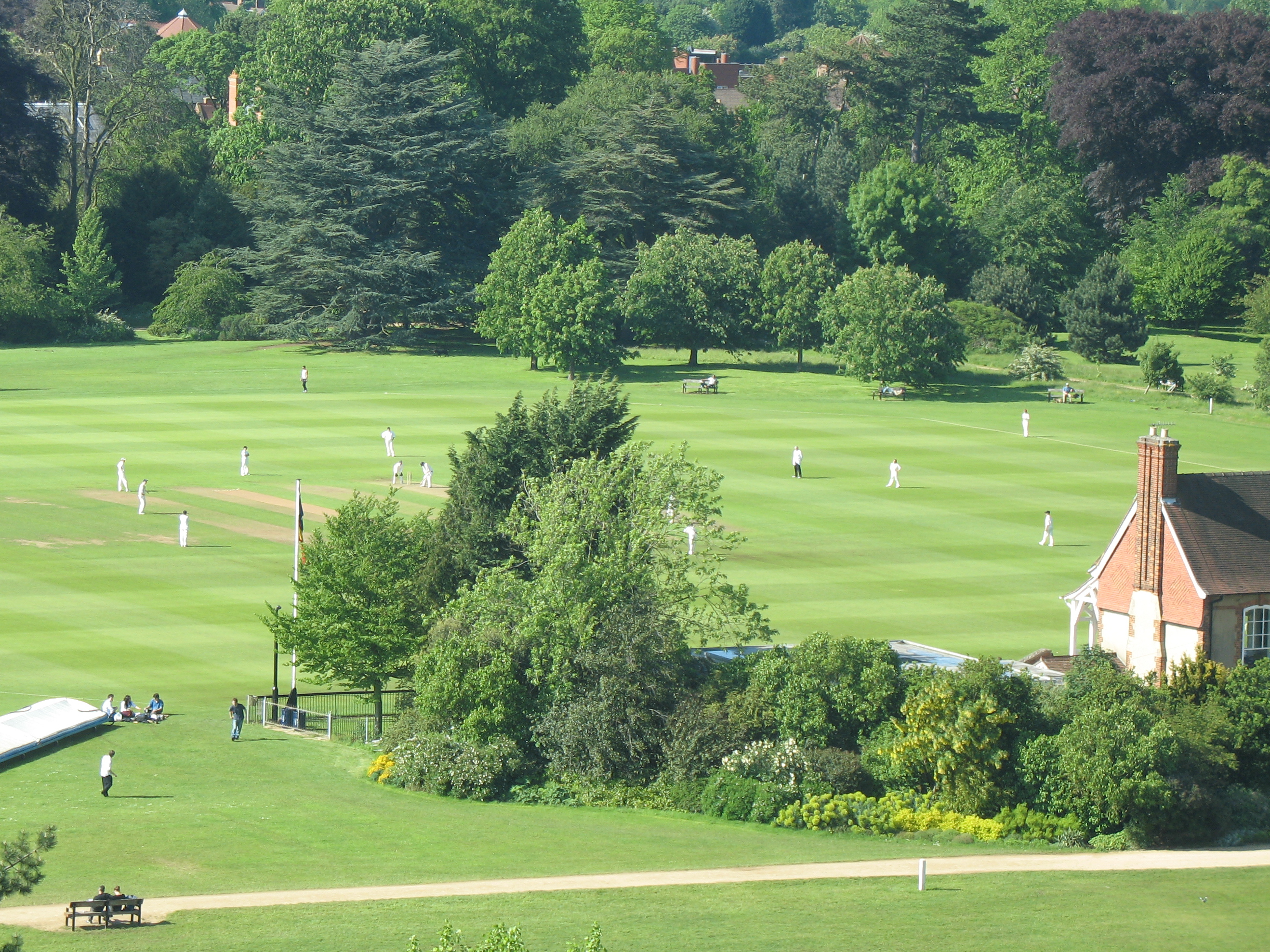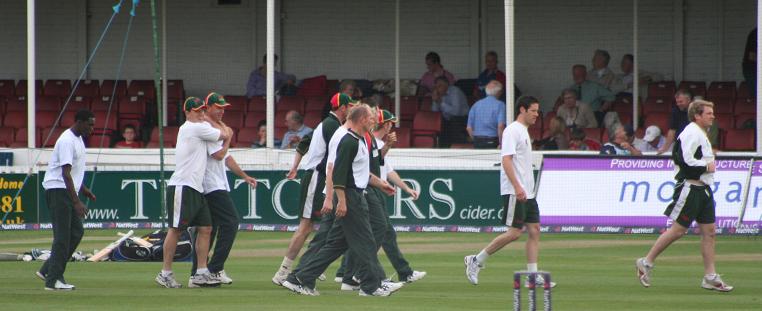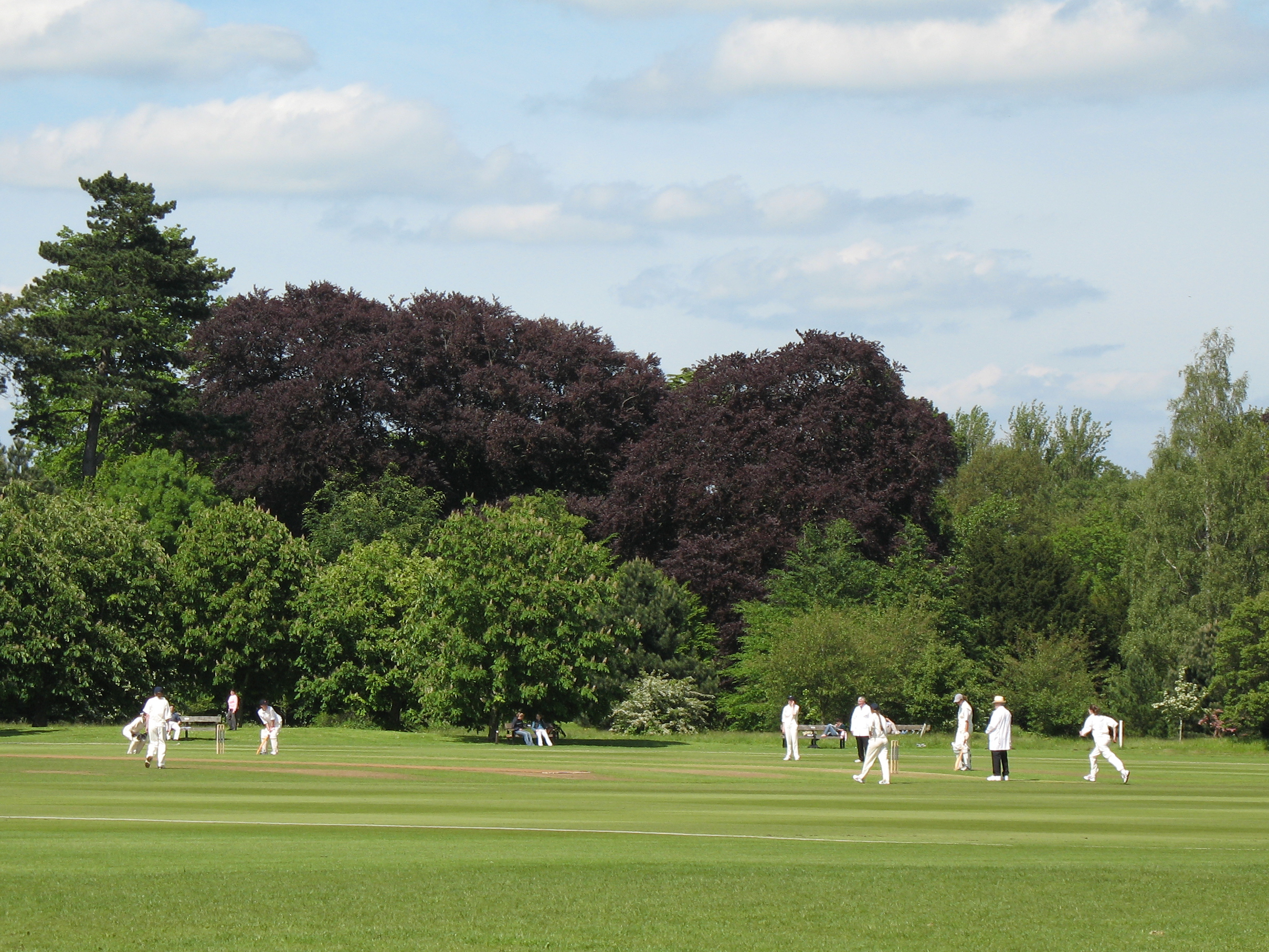|
Jack Gannon
Brigadier Jack Rose Compton Gannon (1 November 1882 – 25 April 1980) was an Irish first-class cricketer and British Army officer. He served initially with the British Army's South Staffordshire Regiment before joining the Indian Army's 23rd Cavalry (Frontier Force). He saw active service in the First World War and the Third Anglo-Afghan War and was mentioned in dispatches. Gannon later served as assistant military secretary to the British commander-in-chief in India before his retirement in 1933. He was recalled to service in the Second World War and was recognised for his contributions to the war on the western front by two further mentions in dispatches and appointment to British and Dutch honours. In retirement he was manager of The Hurlingham Club – an exclusive sports club – and honorary secretary of the Hurlingham Polo Association. Gannon played eight first-class cricket matches for Marylebone Cricket Club and the Europeans. Early life and career The son ... [...More Info...] [...Related Items...] OR: [Wikipedia] [Google] [Baidu] |
United Kingdom Of Great Britain And Ireland
The United Kingdom of Great Britain and Ireland was a sovereign state in the British Isles that existed between 1801 and 1922, when it included all of Ireland. It was established by the Acts of Union 1800, which merged the Kingdom of Great Britain and the Kingdom of Ireland into a unified state. The establishment of the Irish Free State in 1922 led to the remainder later being renamed the United Kingdom of Great Britain and Northern Ireland in 1927. The United Kingdom, having financed the European coalition that defeated France during the Napoleonic Wars, developed a large Royal Navy that enabled the British Empire to become the foremost world power for the next century. For nearly a century from the final defeat of Napoleon following the Battle of Waterloo to the outbreak of World War I, Britain was almost continuously at peace with Great Powers. The most notable exception was the Crimean War with the Russian Empire, in which actual hostilities were relatively limited. How ... [...More Info...] [...Related Items...] OR: [Wikipedia] [Google] [Baidu] |
Sutton Valence School
Sutton Valence School (SVS) is an independent school near Maidstone in southeast England. It has 560 pupils. It is a co-educational day and boarding school. There are three senior boarding houses: Westminster, St Margaret's and Sutton. History The school was founded in 1576 as the Free Grammar School of William Lambe in Sutton Valence, by William Lambe, Master of the Worshipful Company of Clothworkers and a member of the Chapel Royal of Henry VIII. It remained under the control of the Worshipful Company of Clothworkers until 1910 when it was taken under the control of United Westminster Schools, a charitable trust which also incorporates Emanuel School and Westminster City School in London and more recently combined with Grey Coat Hospital and Queen Anne's School as The United Westminster and Grey Coat Foundation. In 1983, the school became co-educational and in 1995 it incorporated Underhill Preparatory School. It is now a co-educational day and boarding school catering for pu ... [...More Info...] [...Related Items...] OR: [Wikipedia] [Google] [Baidu] |
4th Hussars
The 4th Queen's Own Hussars was a cavalry regiment in the British Army, first raised in 1685. It saw service for three centuries, including the First World War and the Second World War. It amalgamated with the 8th King's Royal Irish Hussars, to form the Queen's Royal Irish Hussars in 1958. History Formation and early history The regiment was first raised by the Hon. John Berkeley as The Princess Anne of Denmark's Regiment of Dragoons in 1685, as part of the response to the Monmouth Rebellion by the regimenting of various independent troops, and ranked as the 4th Dragoons. The regiment transferred its allegiance to King William III in February 1689 and fought the depleted forces of James II in Scotland later that year. The regiment saw action at the Battle of Steenkerque, where it suffered heavy losses, in August 1692 and at the Siege of Namur in July 1695 during the Nine Years' War. The regiment suffered heavy losses again at the Battle of Almansa in April 1707 during the War ... [...More Info...] [...Related Items...] OR: [Wikipedia] [Google] [Baidu] |
Captain (British Army And Royal Marines)
Captain (Capt) is a junior officer rank of the British Army and Royal Marines and in both services it ranks above lieutenant and below major with a NATO ranking code of OF-2. The rank is equivalent to a lieutenant in the Royal Navy and to a flight lieutenant in the Royal Air Force. The rank of captain in the Royal Navy is considerably more senior (equivalent to the Army/RM rank of colonel) and the two ranks should not be confused. In the 21st-century British Army, captains are often appointed to be second-in-command (2IC) of a company or equivalent sized unit of up to 120 soldiers. History A rank of second captain existed in the Ordnance at the time of the Battle of Waterloo. From 1 April 1918 to 31 July 1919, the Royal Air Force maintained the junior officer rank of captain. RAF captains had a rank insignia based on the two bands of a naval lieutenant with the addition of an eagle and crown above the bands. It was superseded by the rank of flight lieutenant on the fol ... [...More Info...] [...Related Items...] OR: [Wikipedia] [Google] [Baidu] |
University Parks
The Oxford University Parks, commonly referred to locally as the University Parks, or just The Parks, is a large parkland area slightly northeast of the city centre in Oxford, England. The park is bounded to the east by the River Cherwell, though a small plot of land called Mesopotamia sits between the upper and lower levels of the river. To the north of the parks is Norham Gardens and Lady Margaret Hall, to the west the Parks Road, and the Science Area on South Parks Road to the south. The park is open to the public during the day, and has gardens, large sports fields, and exotic plants. It includes a cricket ground used by Oxford University Cricket Club. History Part of the land on which the Parks is located had been used for recreation for a long time, and it formed part of the University Walks said to have been used by Charles II to walk his dog in 1685. The land originally belonged to Merton College, and in 1853/1854, the University of Oxford purchased from Merton Col ... [...More Info...] [...Related Items...] OR: [Wikipedia] [Google] [Baidu] |
Gentlemen Of England
Cricket, and hence English amateur cricket, probably began in England during the medieval period but the earliest known reference concerns the game being played c.1550 by children on a plot of land at the Royal Grammar School, Guildford, Surrey.Altham, ch. 1. It is generally believed that cricket was originally a children's game as it is not until the beginning of the 17th century that reports can be found of adult participation. Originally, all cricketers were amateurs in the literal sense of the word. Village cricket developed through the 17th century and teams typically comprised players who were all resident in the same village or parish. There is no evidence of professionalism before the English Civil War or during the Commonwealth but legal cases of the period have shown that cricket was played jointly by gentry and workers. Amateur and professional cricketers In the great upsurge of sport after the Restoration in 1660, cricket flourished because so many people had encoun ... [...More Info...] [...Related Items...] OR: [Wikipedia] [Google] [Baidu] |
Philadelphian Cricket Team
The Philadelphian cricket team was a team that represented Philadelphia, Pennsylvania, in first-class cricket between 1878 and 1913. Even with the United States having played the first ever international cricket match against Canada in 1844, the sport began a slow decline in the U.S. This decline was furthered by the rise in popularity of baseball. In Philadelphia, however, the sport remained very popular and from the end of the 19th century until the outbreak of World War I, the city produced a first class team that rivaled many others in the world. The team was composed of players from the four chief cricket clubs in Philadelphia–Germantown, Merion, Belmont, and Philadelphia. Players from smaller clubs, such as Tioga and Moorestown, and local colleges, such as Haverford and Penn, also played for the Philadelphians. Over its 35 years, the team played in 88 first-class cricket matches. Of those, 29 were won, 45 were lost, 13 were drawn and one game was abandoned before c ... [...More Info...] [...Related Items...] OR: [Wikipedia] [Google] [Baidu] |
Leicestershire County Cricket Club
Leicestershire County Cricket Club is one of eighteen first-class county clubs within the domestic cricket structure of England and Wales. It represents the historic county of Leicestershire. It has also been representative of the county of Rutland. The club's limited overs team is called the Leicestershire Foxes. Founded in 1879, the club had minor county status until 1894 when it was promoted to first-class status pending its entry into the County Championship in 1895. Since then, Leicestershire have played in every top-level domestic cricket competition in England. The club is based at Grace Road, Leicester, known as Uptonsteel County Ground and have also played home games at Aylestone Road in Leicester, at Hinckley, Loughborough, Melton Mowbray, Ashby-de-la-Zouch, Coalville, Uppingham and Oakham inside the traditional county boundaries. In limited overs cricket, the kit colours are red with black trim in the Royal London One Day Cup and black with red trim in the ... [...More Info...] [...Related Items...] OR: [Wikipedia] [Google] [Baidu] |
Oxford University Cricket Club
Oxford University Cricket Club (OUCC), which represents the University of Oxford, has always held first-class status since 1827 when it made its debut in the inaugural University Match between OUCC and Cambridge University Cricket Club (CUCC). It was classified as a List A team in 1973 only. Home fixtures are played at the University Parks slightly northeast of Oxford city centre. History The earliest reference to cricket at Oxford is in 1673. OUCC made its known debut in the inaugural University Match between Oxford and Cambridge played in 1827. In terms of extant clubs being involved, this is the oldest major fixture in the world: i.e., although some inter-county fixtures are much older, none of the current county clubs were founded before 1839 (the oldest known current fixture is Kent ''versus'' Surrey). The Magdalen Ground was used for the University Cricket Club's first match in 1829, and remain in regular use until 1880. Bullingdon Green was used for two matches in 18 ... [...More Info...] [...Related Items...] OR: [Wikipedia] [Google] [Baidu] |
Lord's
Lord's Cricket Ground, commonly known as Lord's, is a cricket venue in St John's Wood, London. Named after its founder, Thomas Lord, it is owned by Marylebone Cricket Club (MCC) and is the home of Middlesex County Cricket Club, the England and Wales Cricket Board (ECB), the European Cricket Council (ECC) and, until August 2005, the International Cricket Council (ICC). Lord's is widely referred to as the ''Home of Cricket'' and is home to the world's oldest sporting museum. Lord's today is not on its original site; it is the third of three grounds that Lord established between 1787 and 1814. His first ground, now referred to as Lord's Old Ground, was where Dorset Square now stands. His second ground, Lord's Middle Ground, was used from 1811 to 1813 before being abandoned to make way for the construction through its outfield of the Regent's Canal. The present Lord's ground is about north-west of the site of the Middle Ground. The ground can hold 31,100 spectators, the capacity ... [...More Info...] [...Related Items...] OR: [Wikipedia] [Google] [Baidu] |
First-class Cricket
First-class cricket, along with List A cricket and Twenty20 cricket, is one of the highest-standard forms of cricket. A first-class match is one of three or more days' scheduled duration between two sides of eleven players each and is officially adjudged to be worthy of the status by virtue of the standard of the competing teams. Matches must allow for the teams to play two innings each, although in practice a team might play only one innings or none at all. The etymology of "first-class cricket" is unknown, but it was used loosely before it acquired official status in 1895, following a meeting of leading English clubs. At a meeting of the Imperial Cricket Conference (ICC) in 1947, it was formally defined on a global basis. A significant omission of the ICC ruling was any attempt to define first-class cricket retrospectively. That has left historians, and especially statisticians, with the problem of how to categorise earlier matches, especially those played in Great Britain be ... [...More Info...] [...Related Items...] OR: [Wikipedia] [Google] [Baidu] |
Lieutenant (British Army And Royal Marines)
Lieutenant (; Lt) is a junior officer rank in the British Army and Royal Marines. It ranks above second lieutenant and below captain and has a NATO ranking code of OF-1 and it is the senior subaltern rank. Unlike some armed forces which use first lieutenant, the British rank is simply lieutenant, with no ordinal attached. The rank is equivalent to that of a flying officer in the Royal Air Force (RAF). Although formerly considered senior to a Royal Navy (RN) sub-lieutenant, the British Army and Royal Navy ranks of lieutenant and sub-lieutenant are now considered to be of equivalent status. The Army rank of lieutenant has always been junior to the Navy's rank of lieutenant. Usage In the 21st-century British Army, the rank is ordinarily held for up to three years. A typical appointment for a lieutenant might be the command of a platoon or troop of approximately thirty soldiers. Before 1871, when the whole British Army switched to using the current rank of "lieutenant", the Roy ... [...More Info...] [...Related Items...] OR: [Wikipedia] [Google] [Baidu] |




